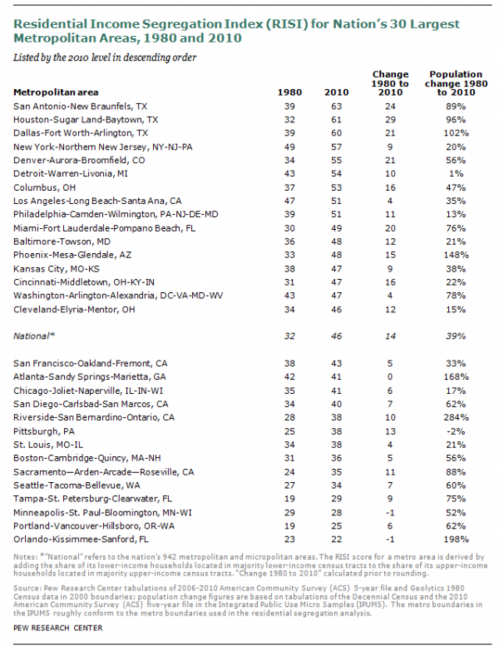While listening to the Daily Circuit’s fascinating discussion yesterday on “diversity” in the suburbs, I kept wondering to myself if the definition of diversity — that is: race — creates a somewhat misleading picture of diversity in the region.
It’s true that there are more people of color in the suburbs now, for example, but there’s still a segregation underway that betrays this notion that the suburbs — and the cities, too, for that matter — are truly a diverse place. It’s economic segregation.
Today, the Pew Research Center released a study that shows economic segregation where we live is increasing, even as the racial segregation decreases.
These increases are related to the long-term rise in income inequality, which has led to a shrinkage in the share of neighborhoods across the United States that are predominantly middle class or mixed income–to 76% in 2010, down from 85% in 1980–and a rise in the shares that are majority lower income (18% in 2010, up from 12% in 1980) and majority upper income (6% in 2010, up from 3% in 1980).
Despite the long-term rise in residential segregation by income, it remains less pervasive than residential segregation by race, even though black-white segregation has been falling for several decades.
In the South, in particular, economic segregation is pegged on an influx of low-skilled, immigrants and high-priced retirees, each heading for their own economic “neighborhoods.”
The Pew report does not break the situation down by city and suburb, but merely documents the 30 largest “metropolitan areas” in the country.
In the Minneapolis metropolitan area, the economic segregation (calculated by the Residential Income Segregation Index, or RISI score) isn’t increasing as it is in the south, but it isn’t decreasing, either. It dropped only slightly over the 30 years from 1980.

